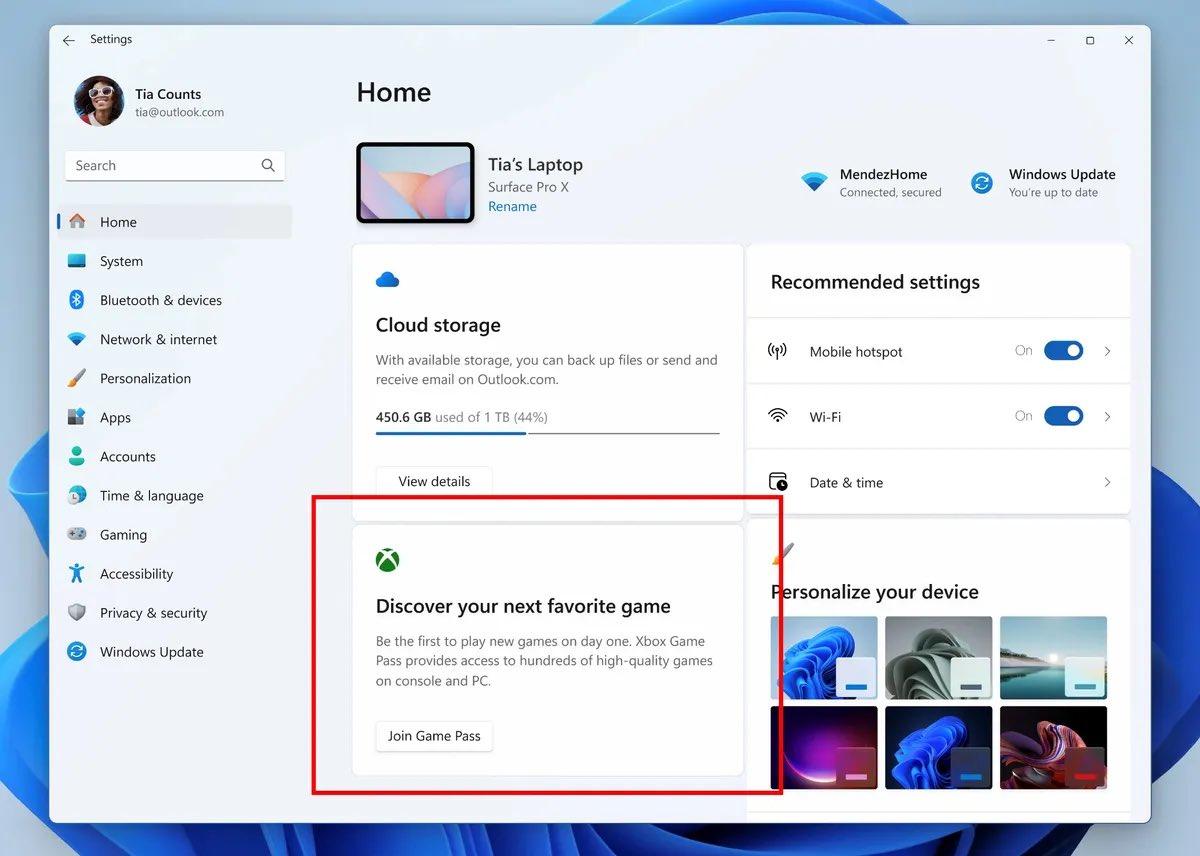In recent years, Microsoft has made significant strides to modernize and improve their Windows operating system. However, a recent move by the tech giant has left many users feeling frustrated and overwhelmed. With the inclusion of a Game Pass ad in the Settings app, Microsoft has demonstrated that they have gone too far, ushering in a whole new age of ridiculous over-advertising.
The Settings app is a critical tool that allows users to customize and manage their Windows experience. It is meant to provide a centralized location for users to access various settings and preferences, enhancing their productivity and control over their devices. Historically, this app has remained relatively free from intrusive advertisements, enabling users to focus on the task at hand.
However, with the introduction of a Game Pass ad in the Settings app, Microsoft is breaking that trust and blurring the lines between useful information and unwelcome promotion. Placing an ad in an essential and frequently accessed system tool is not only disruptive but also disrespectful to users who expect a clean and uninterrupted experience.
Gone are the days when users could rely on the Settings app to be a safe haven from the noise of marketing campaigns. Now, they must navigate through a barrage of ads even in the most vital aspects of their digital lives. This sets a dangerous precedent for future advertising endeavors, as every corner of the operating system could potentially become a space for pushing products and services.
Moreover, the Game Pass ad in the Settings app is personally intrusive. The Settings app traditionally deals with sensitive information like privacy settings, security options, and device configurations. By introducing advertisements into this space, Microsoft is invading users’ privacy and tarnishing their trust in the company’s commitment to respecting user data.
Although Microsoft argues that the Game Pass ad is simply a way to introduce users to new and exciting offerings, there are better ways to accomplish this without encroaching on users’ settings management. Microsoft could highlight the Game Pass service in the Microsoft Store or include the information within the Xbox app, where gamers are more likely to be receptive to such advertisements.
The technology industry is already inundated with advertisements at every turn, be it on social media platforms, search engines, or even within apps and games. Users have become increasingly frustrated by the constant bombardment of ads, seeking solace in settings menus and app preferences. Microsoft’s decision to include a Game Pass ad in the Settings app disregards the need for a serene and focused user experience.
Furthermore, this move highlights a shift in priorities for Microsoft. Instead of focusing on improving the efficiency and user-friendliness of the operating system, the company seems more invested in promoting its various products and services. This shift in focus neglects the needs and expectations of the user base, eroding the trust that Windows users have built over the years.
In conclusion, Microsoft has undoubtedly gone too far by including a Game Pass ad in the Settings app. This decision marks the start of a regrettable new age of ridiculous over-advertising, where even the most fundamental system tools are not spared from the onslaught of promotions. By doing so, Microsoft is alienating users and failing to prioritize their needs and privacy. It’s essential for the company to reassess its advertising strategies and return to providing a clean, respectful, and user-centric Windows experience.

